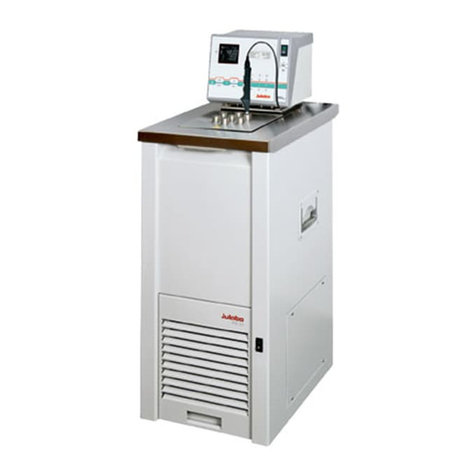
SL
3
TABLE OF CONTENTS
Operating manual................................................................................................................ 5
1. Intended use................................................................................................................. 5
1.1. Description ............................................................................................................... 5
2. Operator responsibility – Safety recommendations....................................................... 6
2.1. Disposal ................................................................................................................... 8
2.2. Technical specifications ........................................................................................... 9
Operating instructions ....................................................................................................... 11
3. Safety notes for the user............................................................................................. 11
3.1. Explanation of safety notes .................................................................................... 11
3.2. Explanation of other notes...................................................................................... 11
3.3. Safety recommendations........................................................................................ 12
4. Operating controls and functional elements ................................................................ 14
5. Preparations ............................................................................................................... 18
5.1. Installation.............................................................................................................. 18
5.2. Bath fluids .............................................................................................................. 19
5.3. Filling / draining...................................................................................................... 20
5.4. Counter-cooling...................................................................................................... 21
6. Operating procedures ................................................................................................. 22
6.1. Power connection................................................................................................... 22
6.2. Switching on / Selecting the language.................................................................... 22
6.3. Start - Stop............................................................................................................. 23
6.4. Adjusting the temperature chamber........................................................................ 23
7. Setting of temperatures ................................................................................. 24
8. Safety installations, warning functions........................................................... 24
8.0.1.Early warning system, low level protection......................................................... 28
9. Menu functions.............................................................................................. 29
9.1. Start of a program .................................................................................................. 31
9.1.1.Status at the end of a program .......................................................................... 33
9.1.2.Indication after successful start.......................................................................... 33
9.1.3.Editing after Start............................................................................................... 34
9.1.4.Interrupting a program ....................................................................................... 34
9.1.5.Interruption after a power failure ........................................................................ 35
9.1.6.Termination of a program................................................................................... 35
9.2. Program administration, creation............................................................................ 36
9.3. Setting the pump pressure ..................................................................................... 40
9.4. Configuration.......................................................................................................... 41
9.4.1.Remote control via the serial interface ............................................................... 44
9.4.2.Keypad control or setpoint setting via the analog input ...................................... 44
9.4.3.Autostart ............................................................................................................ 45
9.4.4.Off-Mode ........................................................................................................... 45
9.4.5.ActVar - actuating variable................................................................................. 46
9.4.6.Setting of clock and date ................................................................................... 47




























